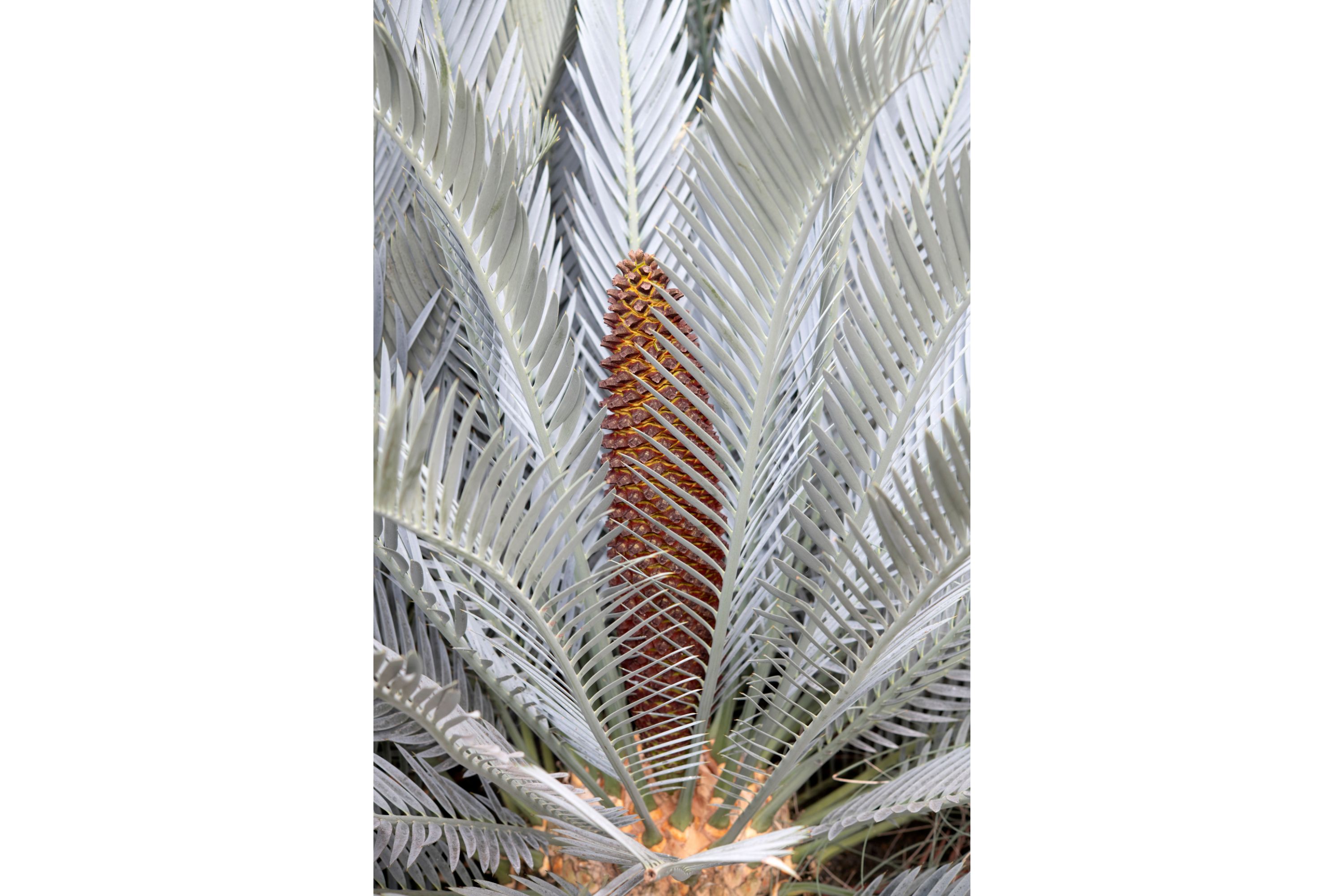Karoo cycad
(Encephalartos lehmannii)

Description
Encephalartos lehmannii is a low-growing palm-like cycad in the family Zamiaceae. It is commonly known as the Karoo cycad and is endemic to South Africa. The species name lehmannii commemorates Prof J.G.C. Lehmann, a German botanist who studied the cycads and published a book on them in 1834. This cycad is listed as near threatened in the IUCN Red List of Threatened Species. This cycad grows up to two metres tall with a trunk diameter of up to forty five centimetres and may be branched or unbranched. The leaves are up to one hundred and fifty centimetres long, blue or silver and strongly keeled. The leaflets are lanceolate, do not overlap each other and have smooth margins. The male cones are green or brown and up to thirty five centimetres long. The female cones are a similar colour and up to fifty centimetres long. The seeds are red and up to four and a half centimetres long. This species is found in Eastern Cape Province, South Africa mainly on dry sandstone slopes and ridges where it grows amongst low succulent herbs and shrubs. By flourishing in such an arid environment it demonstrates how the cycad race has endured through the ages, seemingly immune to drought when many other tree species such as the cabbage trees and taaibos are leafless and sometimes dead. Encephalartos is a genus of cycad native to Africa. Several species of Encephalartos are commonly referred to as bread trees,bread palms or kaffir bread, since a bread-like starchy food can be prepared from the centre of the stem. The genus name is derived from the Greek words en (within), kephalē (head), and artos (bread), referring to the use of the pith to make food. They are, in evolutionary terms, some of the most primitive living gymnosperms. All the species are endangered, some critically, due to their exploitation by collectors and traditional medicine gatherers.The whole genus is listed under CITES Appendix I which prohibits international trade in specimens of these species except for certain non-commercial motives, such as scientific research. Several of the species possess stout trunks. In E. cycadifolius, the main trunks are up to 10 feet (3.0 m) high, and several of them may be united at a base where a former main trunk once grew. The persistent, pinnate leaves are arranged in a terminal spreading crown, or ascending. The rigid leaflets are variously spiny or incised along their margins. The leaflets have a number of parallel veins and no central vein.
Taxonomic tree:







